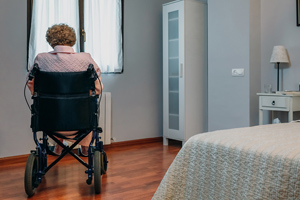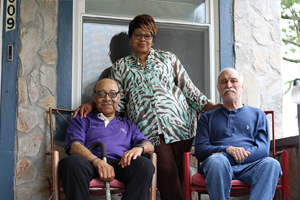Inside the FDA’s Vaccine Uproar
Follow-Up Exam: True And False Ideas About Aging
As Americans get older, it helps to tickle the ol’ noggin with trivia. Take this pop quiz to see what you have learned as a regular reader of KHN’s coverage of aging issues. (Click on the blue button, below.)

KHN’s coverage related to aging & improving care of older adults is supported by The John A. Hartford Foundation.
Get Started1
True or false: About three-quarters of Americans 65 and older have mild cognitive impairment while about 30 percent have dementia.

— Only 20-25 percent of seniors have mild cognitive impairment and about 10 percent have been diagnosed with dementia.
2
True or false: Living wills apply to the treatment of both terminal and non-terminal conditions.

— Living wills become activated only when a person is terminally ill and unconscious or in a permanent vegetative state.
3
True or False: A “do not resuscitate” order is another way to describe a living will.

— Do-not-resuscitate orders, or DNRs, are binding medical orders signed by a physician and apply only to a person who has gone into cardiac arrest and the use of CPR.
4
True or false: Defibrillation and cardiopulmonary resuscitation (CPR) are distinct lifesaving interventions.

— Defibrillation, or shocking the heart with an electrical current, differs from cardiopulmonary resuscitation, which involves rhythmic compression of the chest by hand to maintain blood circulation and force air into the lungs.
5
Which of these is a contributing factor in unnecessary rehospitalizations of nursing home patients?

— Nursing homes with more nurses and aides can identify emerging problems before they require hospitalization.
6
True or false: Medicare is the primary payer for the room, board and daily care of most residents in skilled nursing homes.

— The majority of nursing home residents' stays are covered by Medicaid, the state-federal program designed for the poor.
7
True or false: There are monetary incentives for hospitals to discharge Medicare patients back to nursing homes as soon as possible, even if the patient prefers to recover there longer.

— Medicare pays a set rate for each patient stay, based on the average time it takes to treat a patient with a given diagnosis. Hospitals make the same amount regardless of how long a patient stays, while freeing the bed for a new patient — and starting a new tab.
8
Which of the following is NOT a requirement for caregivers who plan to use their homes to foster military veterans?

— There is no requirement that caregivers have military service.
9
True or false: A large source of opposition to the home-based veterans foster care program is the cost.

— Placing veterans in an individual home costs $60 a day, compared with upward of $500 a day to place veterans in nursing homes.
10
True or false: College graduates can expect to spend more of their lifetime with good cognition than can individuals who didn’t complete high school.

— College graduates can expect to spend more than 80 percent of their lifetime after age 65 with good cognition, compared with 50 percent for those who did not complete high school.
Follow-Up Exam: True And False Ideas About Aging
You Answered out of 10 Questions Correctly.
Question
Correct Response
1
True or false: About three-quarters of Americans 65 and older have mild cognitive impairment while about 30 percent have dementia.
— Only 20-25 percent of seniors have mild cognitive impairment and about 10 percent have been diagnosed with dementia.
2
True or false: Living wills apply to the treatment of both terminal and non-terminal conditions.
— Living wills become activated only when a person is terminally ill and unconscious or in a permanent vegetative state.
A terminal illness is one from which a person is not expected to recover, even with treatment — for instance, advanced metastatic cancer. Bouts of illness that can be treated — such as an exacerbation of heart failure — are “critical” not “terminal” and should not activate a living will. To be activated, one or two physicians must certify that your living will should go into effect, depending on the state where you live.
3
True or False: A “do not resuscitate” order is another way to describe a living will.
— Do-not-resuscitate orders, or DNRs, are binding medical orders signed by a physician and apply only to a person who has gone into cardiac arrest and the use of CPR.
The section of a living will specifying that you don’t want CPR is a statement of a preference, not a DNR order. DNR orders are often wrongly equated with “do not treat” at all.
4
True or false: Defibrillation and cardiopulmonary resuscitation (CPR) are distinct lifesaving interventions.
— Defibrillation, or shocking the heart with an electrical current, differs from cardiopulmonary resuscitation, which involves rhythmic compression of the chest by hand to maintain blood circulation and force air into the lungs.
In a survey, a surprising 75 percent of 223 emergency physicians said they wouldn’t have pursued defibrillation if the patient had experienced cardiac arrest.
5
Which of these is a contributing factor in unnecessary rehospitalizations of nursing home patients?
— Nursing homes with more nurses and aides can identify emerging problems before they require hospitalization.
Read more from KHN here.
6
True or false: Medicare is the primary payer for the room, board and daily care of most residents in skilled nursing homes.
— The majority of nursing home residents' stays are covered by Medicaid, the state-federal program designed for the poor.
A combination of longer life spans and spiraling health care costs has left an estimated 62 percent of nursing homes residents dependent on Medicaid, usually the lowest-paying form of insurance. In Alaska, Mississippi, West Virginia and the District of Columbia, Medicaid was the primary payer for the room, board and daily care for three-quarters or more of nursing home residents in 2016, according to the Kaiser Family Foundation. Many have their medical coverage outside of the nursing home covered by Medicare.
7
True or false: There are monetary incentives for hospitals to discharge Medicare patients back to nursing homes as soon as possible, even if the patient prefers to recover there longer.
— Medicare pays a set rate for each patient stay, based on the average time it takes to treat a patient with a given diagnosis. Hospitals make the same amount regardless of how long a patient stays, while freeing the bed for a new patient — and starting a new tab.
Nursing homes have been unintentionally rewarded by decades of colliding government payment policies, which gave both hospitals and nursing homes financial incentives for the transfers. That has left the most vulnerable patients often ping-ponging between institutions, wreaking havoc with patients’ care.
8
Which of the following is NOT a requirement for caregivers who plan to use their homes to foster military veterans?
— There is no requirement that caregivers have military service.
The $20.7 million-per-year Medical Foster Home program provides housing and care for more than 1,000 veterans in 42 states and Puerto Rico, serving as an alternative to nursing home care for those who cannot live safely on their own.
9
True or false: A large source of opposition to the home-based veterans foster care program is the cost.
— Placing veterans in an individual home costs $60 a day, compared with upward of $500 a day to place veterans in nursing homes.
Veterans pay their caregivers $1,500 to $3,000 a month, depending on location, saving the government about $10,000 a month in nursing home care. It has been difficult to scale up, though, because the VA accepts only foster homes that meet strict qualifications.
10
True or false: College graduates can expect to spend more of their lifetime with good cognition than can individuals who didn’t complete high school.
— College graduates can expect to spend more than 80 percent of their lifetime after age 65 with good cognition, compared with 50 percent for those who did not complete high school.
Improvements in education and nutrition, better control of hypertension and cholesterol, cognitively demanding jobs in middle age, and social engagement in later life may all contribute to this expanded period of good brain health, a recent study noted. Read more from KHN here.






